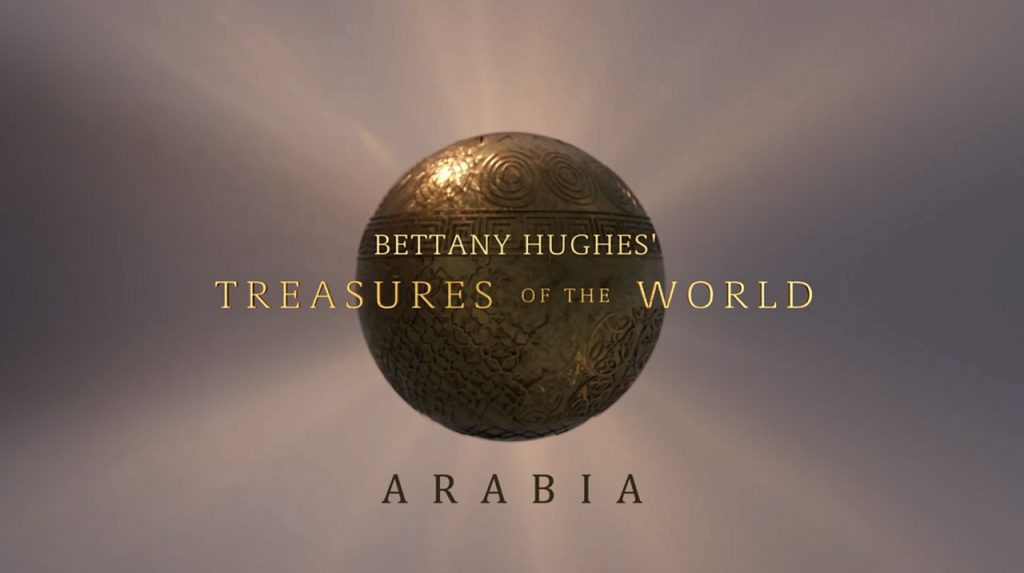Bettany Hughes Treasures of the World episode 6: Bettany travels to Saudi Arabia and Jordan, and visits the iconic sites and undiscovered jewels that are only just becoming accessible to tourists. From the natural beauty of the Red Sea, with its outstanding corals and marine life, to the ancient rock art and desert camps of local Bedouin tribes, testament to humanity’s connection to this awe-inspiring landscape over millennia.
Bettany Hughes’ Treasures of the World Arabia is a fascinating documentary series that takes viewers on a journey through the history and culture of the Arabian Peninsula. The series consists of six episodes, each of which explores a different aspect of Arabian heritage, from the ancient Nabataean city of Petra in Jordan to the bustling metropolis of Dubai. Throughout the series, Bettany Hughes provides viewers with a comprehensive overview of the region’s history, highlighting its pivotal role in shaping the world we live in today. She explores the cultural and religious significance of the region, tracing its roots back to the rise of Islam in the 7th century and the flourishing of Islamic civilization in the centuries that followed.
One of the most striking features of the series is the stunning cinematography, which captures the beauty of the region’s landscape, from the stark deserts of Saudi Arabia to the lush valleys of Oman. The series also features interviews with local experts, historians, and archaeologists who offer insights into the various cultural and historical treasures of the region. One of the standout episodes of the series is the one on Petra, a UNESCO World Heritage site that was once the capital of the Nabataean Kingdom. Hughes takes viewers on a tour of the ancient city, exploring its magnificent tombs and temples, including the iconic Treasury and the Monastery, both of which are carved into the rock face.
Bettany Hughes’ Treasures of the World Arabia is an engaging and informative series that offers a glimpse into the rich history and culture of the Arabian Peninsula. It is a must-watch for anyone interested in the region’s heritage and the wider impact it has had on the world.
Bettany Hughes Treasures of the World episode 6
Hisma plateau
The Hisma plateau is located in the southern part of Jordan, between the cities of Aqaba and Wadi Rum. It is an area known for its unique history and culture, shaped by centuries of Bedouin life and trade routes that once crossed the region.
The plateau was once an important stop on the ancient Spice Route that connected Asia and Europe. Merchants would travel through the area, exchanging goods and trading stories with local Bedouin tribes. This rich history can still be seen today in the numerous ruins and ancient inscriptions scattered across the plateau.
The Bedouin culture of the region is also deeply ingrained in the area’s history. Bedouin tribes have called the plateau home for centuries, living in traditional tents and tending to their flocks of sheep and goats. The Bedouin way of life emphasizes hospitality, and visitors to the area are often welcomed with open arms, invited to share tea and stories with the local tribespeople.
Today, the Hisma plateau is a popular destination for tourists seeking an authentic Bedouin experience. Visitors can explore the ancient ruins, hike through the stunning desert landscape, and spend the night in traditional Bedouin tents, experiencing firsthand the warmth and hospitality of the local culture.
Petra
Petra is an ancient city located in southern Jordan, carved into the red sandstone cliffs of the Wadi Musa valley. The city dates back to the 4th century BC, when it was established by the Nabataean people as a center of trade and commerce along the ancient Spice Route.
The Nabataeans were skilled traders and builders, known for their intricate carvings and architectural feats. They built elaborate tombs and temples into the rock face, such as the iconic Treasury and Monastery, which still stand as testaments to their ingenuity and skill. Petra was a thriving city until it was abandoned in the 7th century AD, following a series of earthquakes and changes in trade routes. The city remained largely forgotten until it was rediscovered by a Swiss explorer in the early 19th century, and it has since become one of the most iconic and visited archaeological sites in the world.
The culture of Petra is deeply rooted in the Nabataean way of life, which emphasized trade, agriculture, and religion. The city was home to a diverse mix of cultures and religions, and evidence of this can be seen in the various temples and shrines that still stand in the city. Today, Petra remains an important symbol of Jordanian history and culture, and it is recognized as a UNESCO World Heritage site. Visitors can explore the ancient city, marvel at its stunning architecture, and learn about the rich history and culture of the Nabataean people who once called it home.




